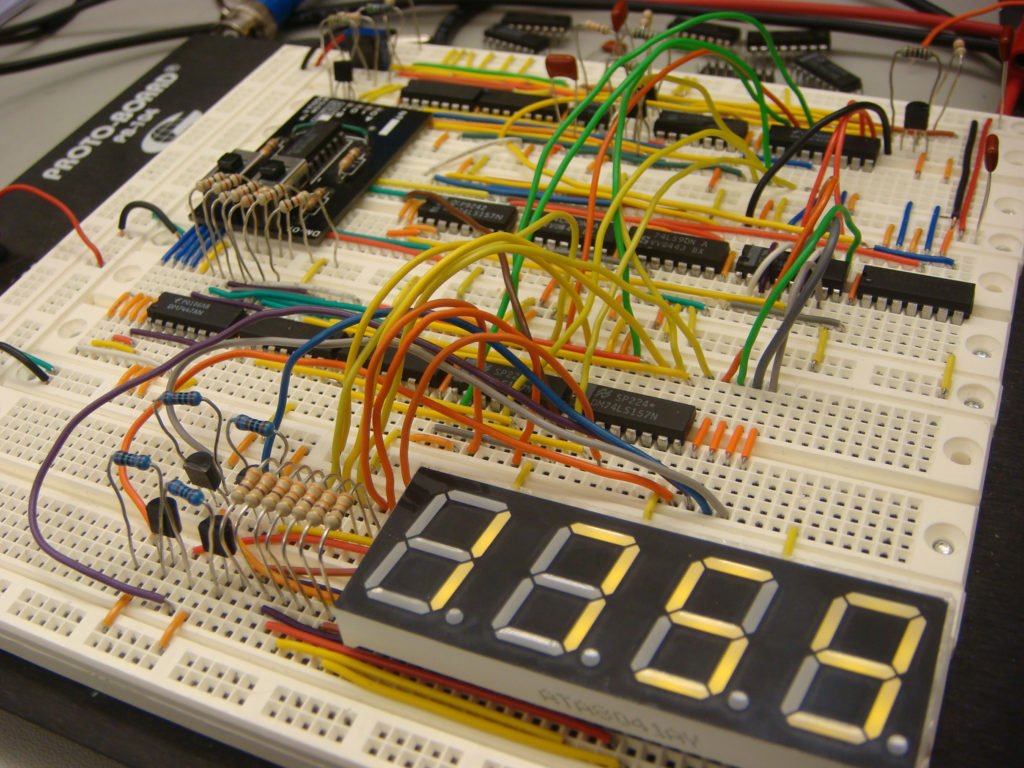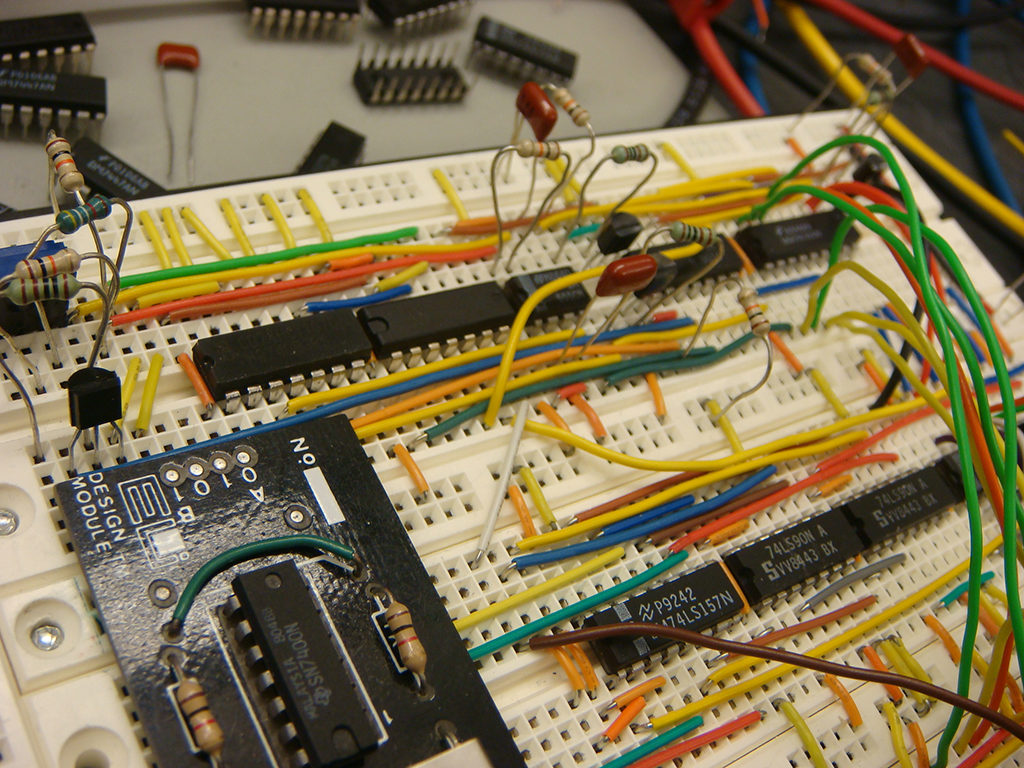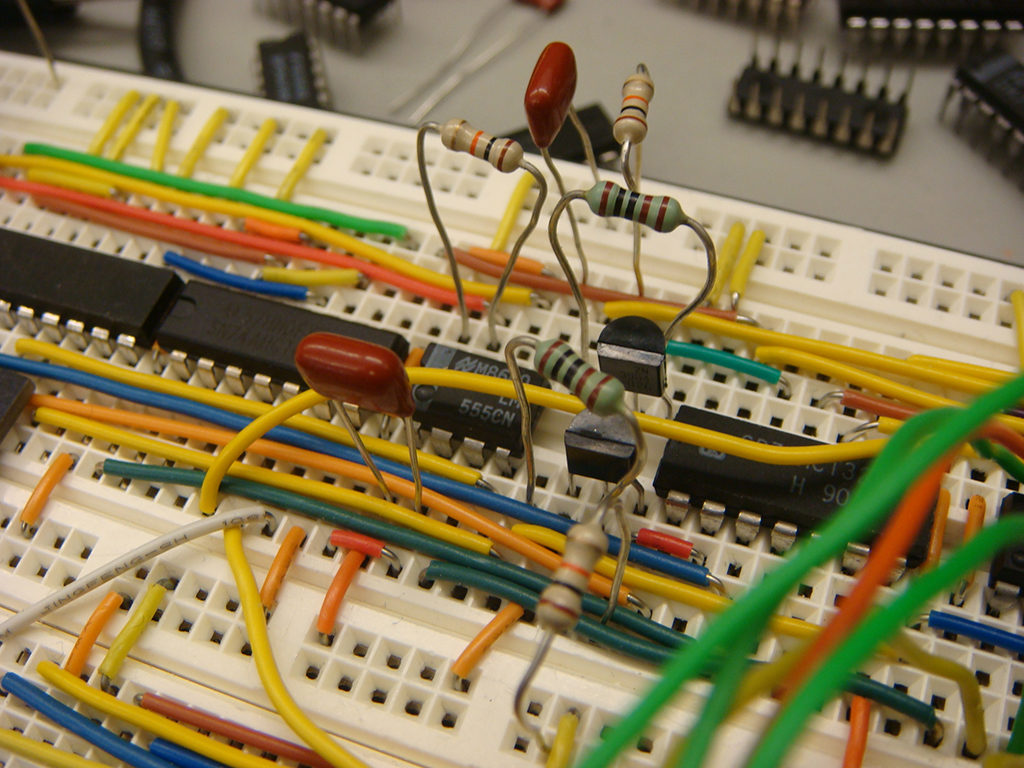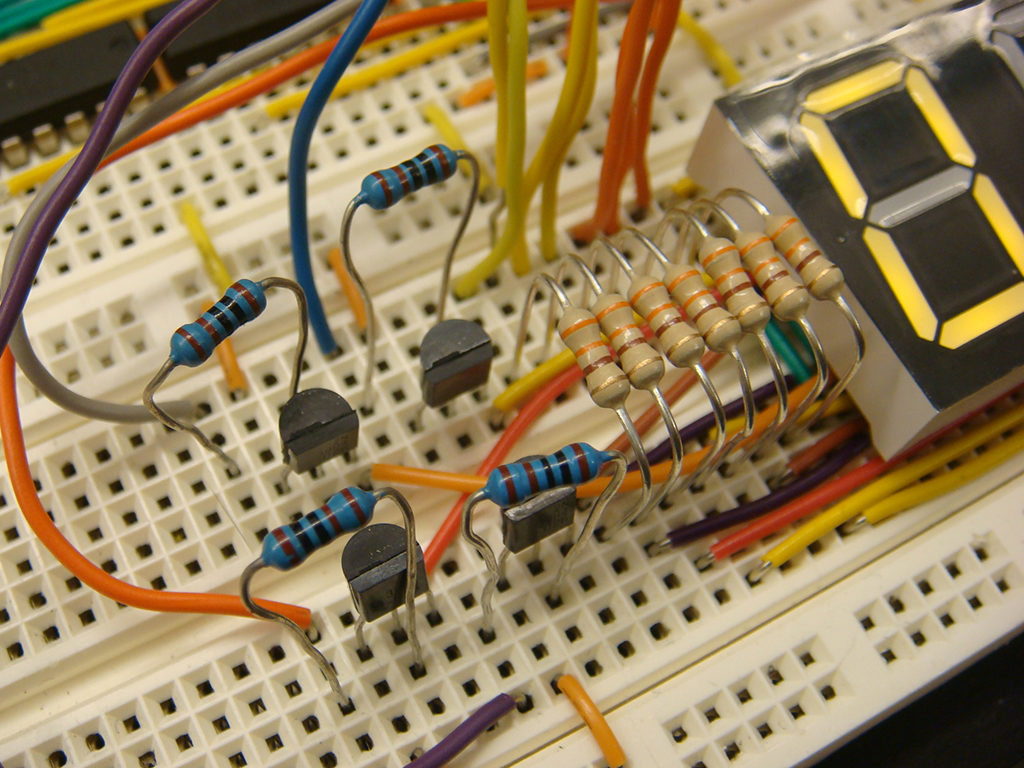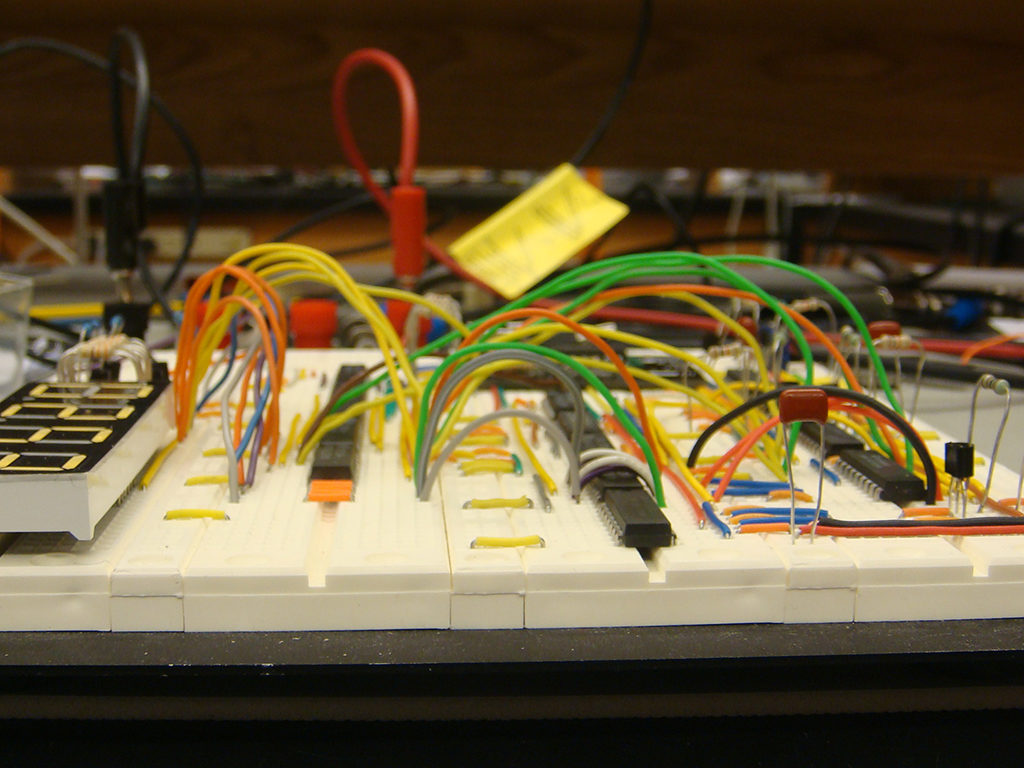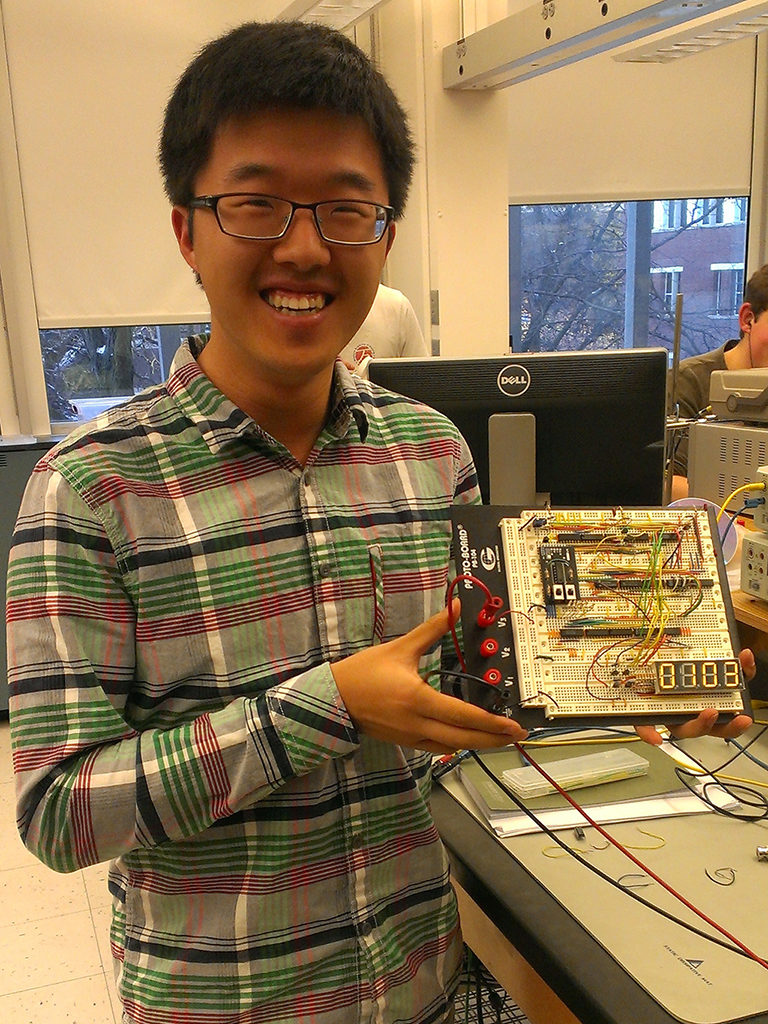Electronics is a field somewhat in between physics, electrical engineering, and computer science. As one of the few advanced physics classes offered at Carleton, I had no choice but to take it. It is not saying that I didn’t enjoy it. I was happy to see how the electronics and computers work from both top-down and bottom-up, and having this scope all the way from CPU down to registers down to logic gates down to transistors down to semiconductors is an unique and engaging journey.
For the final project, I didn’t want to use anything programmable like FPGA, because that felt too much like CS to me, and I wanted to do something more primordial. I implemented this digital stopwatch that had typical start/stop and lag/reset functionalities. There were logic gates in those integrated chips (black little things), yes, but nothing programmable. All the functionalities were realized by directly wiring up those gates. It was quite an endeavor but a fun experience. You can see how it works in action with the following two videos.
You can see in the second clip that the stopwatch automatically changed scale after one minute. This little feature sounds so simple if programming is allowed, but is quite difficult if isn’t. I liked my final work, so I took many pictures of it to showcase how complicated it was. Here those are.
So the rest of the work is to shrink this into that little thing on your wrist. In fact, nowadays people can make things a million times more complicated yet a hundred times smaller. Isn’t that amazing?

